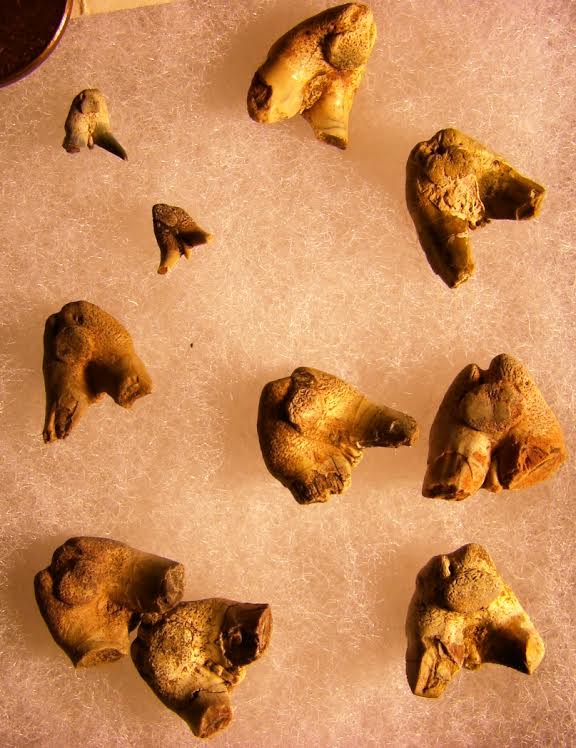
These were the teeth of a xenacanth, genus Orthacanthus: a freshwater shark found from the Devonian to the Permian—400 million years ago to 250 million years ago. Timothy J. Bradley, who wrote and illustrated the excellent children’s book Paleo Sharks: Survival of the Strangest (2007), explains:
Orthacanthus developed an eel-like shape, with a long fin running down its back. Orthacanthus was 10 feet long and had a massive set of powerful jaws, with double-fanged teeth in its wide mouth—perfect for catching the slippery fish and amphibians that swam through the muddy waters of what is now Europe and North America.
I am pleased to be able to give Bradley’s book a little plug. When we corresponded a few years ago, I told him that a young acquaintance enjoyed his book and he kindly sent a sketch of a Helicoprion in reply. See, virtue is rewarded, eventually.
I hope that it helped that I described the Orthacanthus teeth as double-fanged. Most of the pointy bits in the photograph aren’t especially pointy because they’re broken. But hey, let’s see how intact your teeth are after hundreds of millions of years of fossilization.
Congratulations to Dan Coleman for being the first to identify the teeth’s owner, if amid a series of three suggestions, and a tip of the bicuspid hat to Dan Phelps for providing the photograph.

